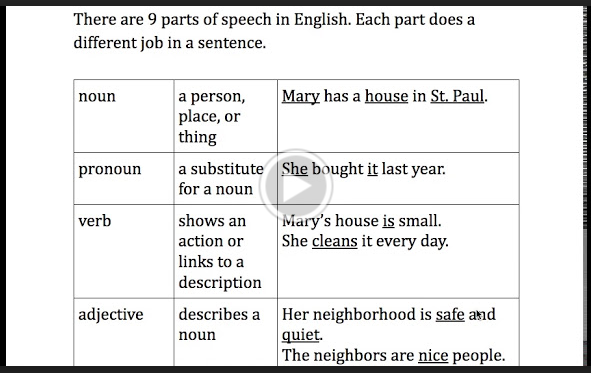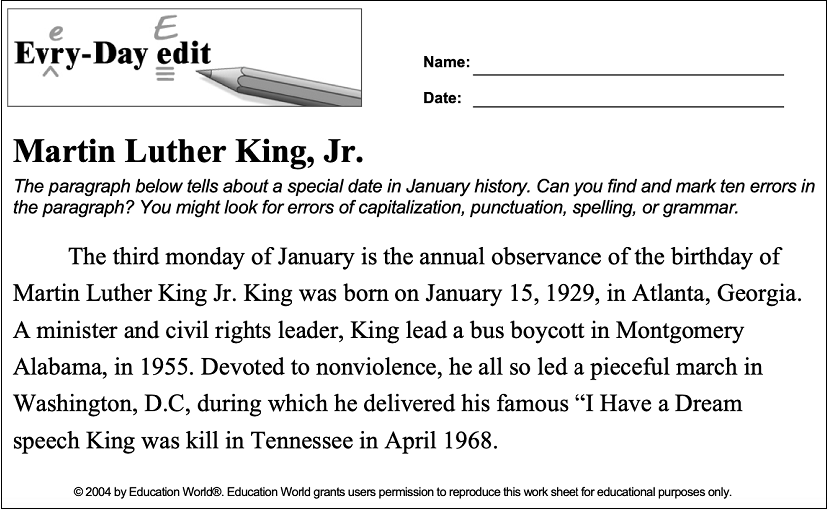- MN ABE Connect
- Archive
- The Fab Four: Writing Resources That You and Your Students Will Love
 January 25, 2021
January 25, 2021
The Fab Four: Writing Resources That You and Your Students Will Love
Stephanie Sommers, Writing Curriculum Team LeadThe beginning of a new year is the perfect opportunity to reflect on your teacher toolkit and think about what might need updating. Could you use some new writing resources to help your students with “inking their thinking”? Whether you are trying to incorporate more writing into your daily routines or looking for a few fresh ideas, this list of four fab writing resources is sure to inspire.
1) Diana’s ELL Writing Practice
(https://sites.google.com/mpls.k12.mn.us/dianas-ell-writing-practice/home)
Diana Mulcahy is a seasoned writing teacher, and one of my colleagues at Minneapolis Adult Education. Diana started creating the videos on her website as a way to cut down on the amount of re-teaching that she had to do when students missed class or needed extra help with a writing concept.
 Unlike some other reliable sites for writing videos, such as Khan Academy, Diana’s videos were created to be understood by low-level ELLs. She slowly and clearly explains each concept using language that is accessible. However, that’s not to say that her website isn’t appropriate for higher level ELLs and even native English speakers. I have used her resources with both of these groups because they are just really good.
Unlike some other reliable sites for writing videos, such as Khan Academy, Diana’s videos were created to be understood by low-level ELLs. She slowly and clearly explains each concept using language that is accessible. However, that’s not to say that her website isn’t appropriate for higher level ELLs and even native English speakers. I have used her resources with both of these groups because they are just really good.
Her videos can be incorporated into classroom instruction, assigned as additional practice, or used to pre-teach a new concept in a “flipped classroom.” They can also be easily embedded into a Learning Management System (LMS), such as Schoology. The website is divided into five sections that begin with parts of speech and progress up to constructing paragraphs. Currently, her videos cover around 50 grammar and writing topics, and there are also quizzes that can be used to provide additional practice and assessment.
2) Everyday Edits
(https://www.educationworld.com/a_lesson/archives/edit.shtml)
I fell in love with the Everyday Edits website after attending a COABE session in which the presenter talked about how she used it with her students. The website provides short paragraphs for editing practice, and they are targeted towards a 4th grade reading level. The paragraphs are organized by month, and all of the paragraphs within a given month have some connection to the month or season. There are enough paragraphs included with each month that you could use a different one every day and not run out. If you were to run out, however, they also have a collection of paragraphs for extra practice.
 Each paragraph contains 10 mistakes, and the mistakes are always within the same four areas: capitalization, usage and grammar, punctuation and spelling. This consistency makes it easy to create a routine around doing the practice. At the COABE session that I mentioned, the presenter shared that she teaches her students the mnemonic device CUPS to help them remember the four areas. I have adopted that approach and have found that it gives students who are new to editing a framework that helps them to find and fix the mistakes.
Each paragraph contains 10 mistakes, and the mistakes are always within the same four areas: capitalization, usage and grammar, punctuation and spelling. This consistency makes it easy to create a routine around doing the practice. At the COABE session that I mentioned, the presenter shared that she teaches her students the mnemonic device CUPS to help them remember the four areas. I have adopted that approach and have found that it gives students who are new to editing a framework that helps them to find and fix the mistakes.
The paragraphs make a great warm-up activity, and I have observed great improvement when used over time with my students. For GED or HSE teachers, the paragraphs can be an easy way to bring some writing practice into your Social Studies lessons as they are informational texts that often focus on famous people or events.
3) 365 Days of Writing Prompts
(https://dailypost.files.wordpress.com/2013/12/365-days-of-writing-prompts-1387477491.pdf)
This is another great resource that happens to be organized by month. This booklet provides a different writing prompt for each day of the year. The prompts range from funny to thought-provoking to literary in nature. They encourage self-reflection, creativity, and the practice of making connections.
I have used the prompts as written, and I have also tweaked some of them to be better fits with my students. They make excellent quick write or timed writing activities, or they can be used as journal prompts.
 I have used prompts such as these to get students focused on producing writing. Specifically, I used to have students write in a journal every week for a specified amount of time. The goal was to write for the whole time, usually 15-20 minutes, and to track how many words the student produced each time. This was to help my students who had the goal of passing the RLA portion of the GED test and would need to be able to produce an essay in a short amount of time. More recently, I have used these prompts as discussion topics in Schoology. They are a great way to get students to share a little bit about themselves and connect with others during remote learning.
I have used prompts such as these to get students focused on producing writing. Specifically, I used to have students write in a journal every week for a specified amount of time. The goal was to write for the whole time, usually 15-20 minutes, and to track how many words the student produced each time. This was to help my students who had the goal of passing the RLA portion of the GED test and would need to be able to produce an essay in a short amount of time. More recently, I have used these prompts as discussion topics in Schoology. They are a great way to get students to share a little bit about themselves and connect with others during remote learning.
4) Tiered Sentence Combining (TSC 2014)
(https://atlasabe.org/resource/tiered-sentence-combining/)
This final resource was developed by Marn Frank with support and guidance from MN STAR teachers. It follows a research-based approach for helping students learn how to create sentences with variety and complexity.
Tiered Sentence Combining includes over 35 exercises for helping students use both Tier 1 (sight) and Tier 2 (academic) words and introduces six strategies for sentence combining. Through explicit instruction, students learn how to effectively use the coordinating conjunctions and, but, or, and so to show a variety of relationships between ideas (i.e. contrast, addition, choice, and cause and effect). Research shows that repeated practice with sentence combining techniques is one of the most effective ways of improving student writing to make it more academic and professional.
All the resources described above, as well as many more, can be found in the Writing resource library on the ATLAS website: https://atlasabe.org/resources/writing/.
For more ideas about how to engage your students with writing, check out the virtual Language & Literacy 2021 Institute on January 28–29. Registration is free this year, but you do need to register at the Events page on the ATLAS website.

Newsletter Signup
Get MN ABE Connect—the official source for ABE events, activities, and resources!
Sign UpArticle Categories
- ABE Foundations/Staff Onboarding
- ACES/Transitions
- Adult Career Pathways
- Assessment
- CCR Standards
- Citizenship
- COVID-19
- Cultural Competency
- Digital Literacy/Northstar
- Disabilities
- Distance Learning/Education
- ELA
- Equity/Inclusion
- ESL
- HSE/Adult Diploma
- Listening
- Math/Numeracy
- Mental Health
- Minnesota ABE
- One-Room Schoolhouse/Multilevel
- Professional Development
- Program Management
- Reading
- Remote Instruction
- Science
- Social Studies
- Speaking/Conversation
- Support Services
- Teaching Strategies
- Technology
- Uncategorized
- Volunteers/Tutors
- Writing